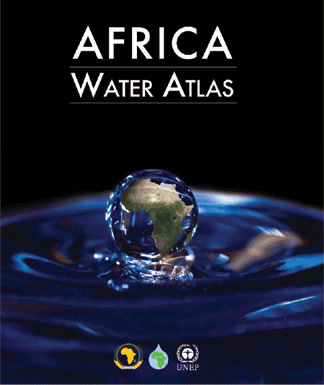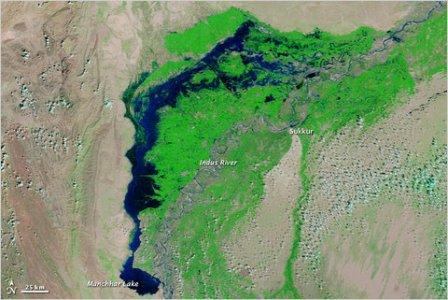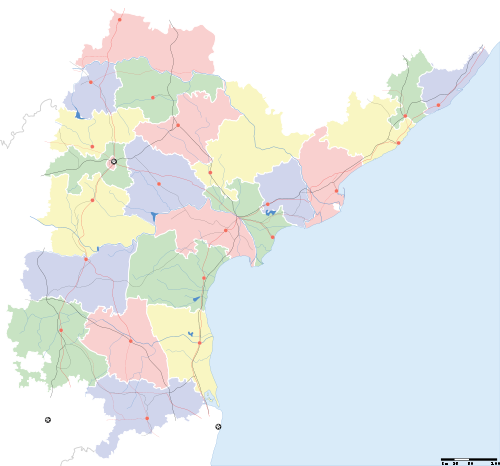/sub-categories/maps
Maps
NASA study finds earth's lakes are warming
Posted on 01 Dec, 2010 11:14 AM Lake Tahoe, seen here from Emerald Bay, was one of the primary validation sites for the global lake study. Image credit: NASA/JPL-Caltech
Lake Tahoe, seen here from Emerald Bay, was one of the primary validation sites for the global lake study. Image credit: NASA/JPL-Caltech
Africa water altas by the United Nations Environment Programme
Posted on 01 Dec, 2010 10:45 AMArticle and Image Courtesy: United Nations Environment Programme (UNEP)

This Atlas is a visual account of Africa's endowment and use of water resources, revealed through 224 maps and 104 satellite images as well as some 500 graphics and hundreds of compelling photos. However the Atlas is more than a collection of static maps and images accompanied by informative facts and figures: its visual elements vividly illustrate a succinct narrative describing and analyzing Africa's water issues and exemplifying them through the judicious use of case studies. It gathers information about water in Africa and its role in the economy and development, health, food security, transboundary cooperation, capacity building and environmental change into one comprehensive and accessible volume.
Seasonal changes in Indian aerosols: Updates from Earth Observatory
Posted on 25 Nov, 2010 12:49 PMIn recent years, scientists have detected very high levels of aerosol pollution in the air over India. Some of it is the result of industrial and agricultural activity, and some of it is nature at work.
Rainfall from cyclone Jal - Updates from Earth Observatory
Posted on 17 Nov, 2010 11:19 AMArticle Courtesy: Earth Observatory
Image Courtesy: NASA
 Cyclone Jal brought heavy rains to the Bay of Bengal and the southeastern coast of India in early November 2010. This color-coded map shows total rainfall over the region from November 1–7. The heaviest rainfall—more than 600 millimeters or nearly 24 inches—appears in dark blue. The lightest rainfall—less than 75 millimeters or 3 inches—appears in light green. Superimposed on the map is the storm track, with darker shades of orange corresponding with greater storm intensity.
Cyclone Jal brought heavy rains to the Bay of Bengal and the southeastern coast of India in early November 2010. This color-coded map shows total rainfall over the region from November 1–7. The heaviest rainfall—more than 600 millimeters or nearly 24 inches—appears in dark blue. The lightest rainfall—less than 75 millimeters or 3 inches—appears in light green. Superimposed on the map is the storm track, with darker shades of orange corresponding with greater storm intensity.
A band of heavy rainfall ran parallel to the November 5–7 storm track. Especially heavy rain occurred south and west of where Jal made landfall on India’s southeastern coast. The Press Trust of India attributed 11 deaths in Andhra Pradesh state to heavy rains from Jal.
Conducted open source GIS training for United Nations Population Fund
Posted on 08 Nov, 2010 08:37 PMTwo Weeks Customized training program on Quantum GIS and GRASS GIS for Census Department was conducted by United Nations Population Fund Office(UNFPA), Koreain Collaboration with Magendhiran Consultancy Services from 18th - 29th Oct 2010.
A blue Pakistan, submerged, in NASA image
Posted on 27 Oct, 2010 11:09 AMNew satellite images from NASA show the extraordinary scope of the continuing disaster in Pakistan, where thousands of square miles of land remain submerged two months after the country was hit by catastrophic flooding.
 A satellite image captured last week shows flood waters lingering in Sindh Province and Manchhar Lake at twice its normal size.
A satellite image captured last week shows flood waters lingering in Sindh Province and Manchhar Lake at twice its normal size.
Cartography and Map Reproduction (CMR) - Training course schedule 2010, NATMO, Kolkata
Posted on 26 Aug, 2010 02:56 PMGroundwater regulation under consideration for Andhra Pradesh
Posted on 16 Aug, 2010 05:01 PMThe legislation is likely to be in the form of an upgrade to the AP Water Land and Trees Act (WALTA).

Click here for the current Act
Attached are two working documents that are being used to frame the discussion for the new regulations.
PLEASE NOTE: These in no way represent final or official positions of the AP Government or other organisations and are not to be taken as such.
Flood plain mapping of Phulbari area using satellite data – A research report by National Institute of Hydrology
Posted on 30 Jul, 2010 08:02 AMThe report presents flood plain mapping of Phulbari area within the flood plains of Brahmaputra basin in the States of Assam and Meghalaya using satellite data. Flood is a natural calamity in which most parts of the north-eastern region are ravaged. Management of the problem in these disastrous flood affected areas often requires flood plain mapping for protection and resource development. This has mostly being done in real time on the basis of time consuming and often hazardous ground based surveys.
GIS based rainfall-runoff modeling for Hemavathy catchment – A research report by National Institute of Hydrology
Posted on 29 Jul, 2010 09:19 PMThe report deals with Geographical Information Systems (GIS) based rainfall-runoff modeling using Topography Model (TOPMODEL) for the Hemavathy catchment of Cauvery basin in Western Ghats of Karnataka. The TOPMODEL is a variable contribution area model in which the predominant factors determining the formation of runoff are represented by the topography of the basin and a negative exponential law linking the transmissivity of the soil with the vertical distance from the ground level.
